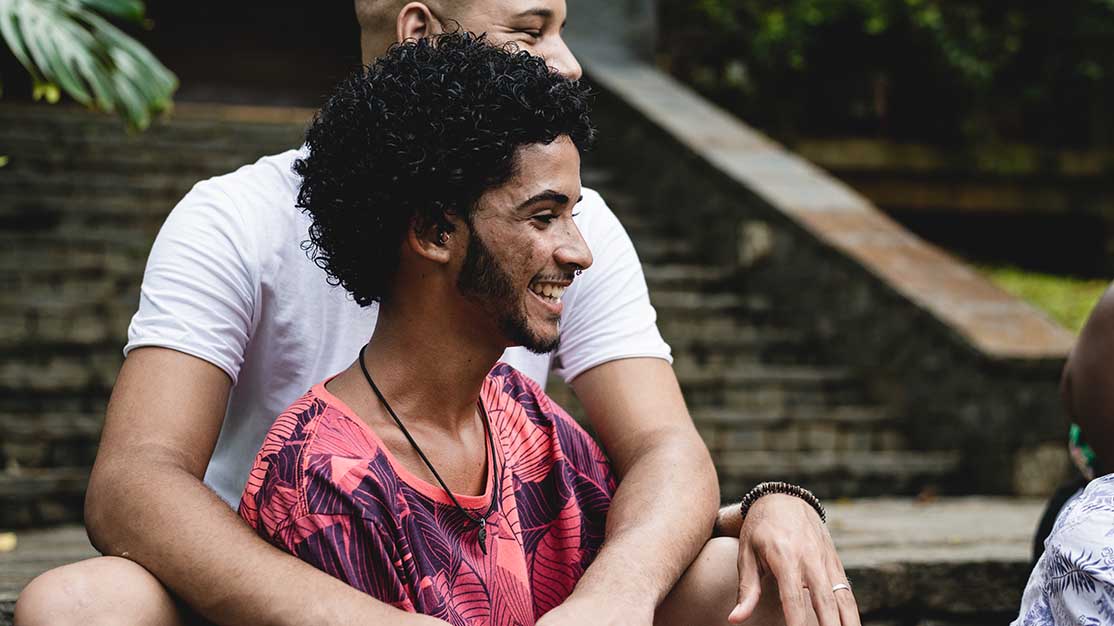Your toughest HIV prevention questions, answered

When it comes to HIV prevention, you probably know the basics: use condoms, get tested regularly, and talk openly with your partners about your status.
You've likely heard these recommendations plenty of times before. You might also have some understanding of pre-exposure prophylaxis (PrEP), the medication you can take on a daily basis — similar to how you'd take a birth control pill — that may help prevent you from contracting HIV.
But for many people at higher risk of HIV, lots of questions remain; for example, if my partner is "Undetectable," should I still take PrEP? How can I test for HIV at home? And if I'm not on PrEP, how soon after potential exposure should I take post-exposure prophylaxis (PEP), the medication taken after exposure to help prevent you from contracting HIV?
Here are a few answers to some of the most confusing questions surrounding HIV and PrEP.
What's the difference between PrEP and PEP?
PrEP and PEP may both help prevent you from becoming HIV-positive in the event you are exposed to HIV, but they are very different in nature.
PrEP stands for pre-exposure prophylaxis. As its name suggests, PrEP is taken every day at the same time on an ongoing basis, so that if you come into contact with HIV you're less likely to become HIV-positive.
PEP stands for post-exposure prophylaxis. PEP is taken in emergency situations when you've potentially been exposed to HIV. You must take it within 72 hours of exposure to help you avoid getting HIV.
How soon can a test detect HIV?
After you've had unprotected sex or shared needles and syringes, you have a couple of options. The first option is to take PEP if you're within the 72-hour window.
If you're already outside that window, it's time to get an appointment for testing. No test can tell you your status right away. The most sensitive type of test, a Nucleic Acid Test (NAT), can give you accurate results 10 to 33 days after exposure, but this type of test is expensive. You may wish to wait until you're up to between 18 and 45 days out, at which time you can take an antigen/antibody test through a lab, which requires getting your blood drawn. If you take an antibody test that only requires a finger prick, you should wait until 23 to 90 days out for best results.
If my partner is "Undetectable" should I look into using PrEP?
Most people living with HIV now know that if they are taking antiretroviral treatment (ART), it is possible to become "undetectable." Undetectable means that there is such a small level of HIV in the body, it is no longer seen in HIV tests and cannot pass to partners through unprotected sex.
If your partner is undetectable, you may choose to take PrEP as an extra precaution, but while your partner is undetectable, they cannot pass HIV to you through sexual intercourse. Keep in mind, however, that their undetectable status can change at any time. If someone is undetectable, it is recommended that they test their viral load 2-4 times per year. Maintain an open dialogue with your partner about their viral load so you can make the best choice for you. Also, keep in mind that PrEP doesn't protect against other STDs, so you may still want to use condoms to protect yourself against diseases like chlamydia and gonorrhea.
Can I test for HIV at home?
Sure you can. OraSure makes a testing kit that you can purchase from your local Walgreens or Walgreens.com. These at-home tests let you get results in as little as 20 minutes.
Can HIV be prevented with a vaccine?
Unfortunately, no. Currently, there is no vaccine that can prevent HIV. Scientists continue to work hard on creating a vaccine, but in the meantime, taking PrEP every day is an option for reducing your chances of infection.
How can I get PrEP without insurance?
PrEP is covered by most health insurance plans, including Medicaid. However, if you don't have health insurance or if for some reason your plan doesn't cover PrEP, there are ways to get financial assistance.
One option is to check with your Walgreens pharmacist. Walgreens partnered with the Department of Health and Human Services (HHS) on a program called Ready, Set, PrEP. If you qualify for the program, you can get PrEP for free. You have to test negative for HIV, have a valid prescription, and have no drug coverage to qualify. You can learn more about the HHS's Ready, Set, PrEP Program by visiting GetYourPrEP.com or calling HHS at (855) 447-8410.
Another option is to apply for assistance through Gilead, the company that makes PrEP. Check out Gilead's website at https://www.gileadadvancingaccess.com/ to learn how to apply.
Planned Parenthood also offers assistance applying for health insurance that covers PrEP.
Even though starting PrEP takes a little research and planning up front, it's an effective way to help you stay as safe as possible. Talk to your doctor, visit your local Walgreens, or head to a nearby sexual wellness clinic to speak to a specialist who can help you figure out if PrEP is a good fit for you.
Published on October 16, 2020
Sources:
https://www.hiv.gov/hiv-basics/hiv-testing/learn-about-hiv-testing/hiv-testing-overview
https://www.preventionaccess.org/faq
https://www.avert.org/living-with-hiv/antiretroviral-treatment/what-does-undetectable-mean